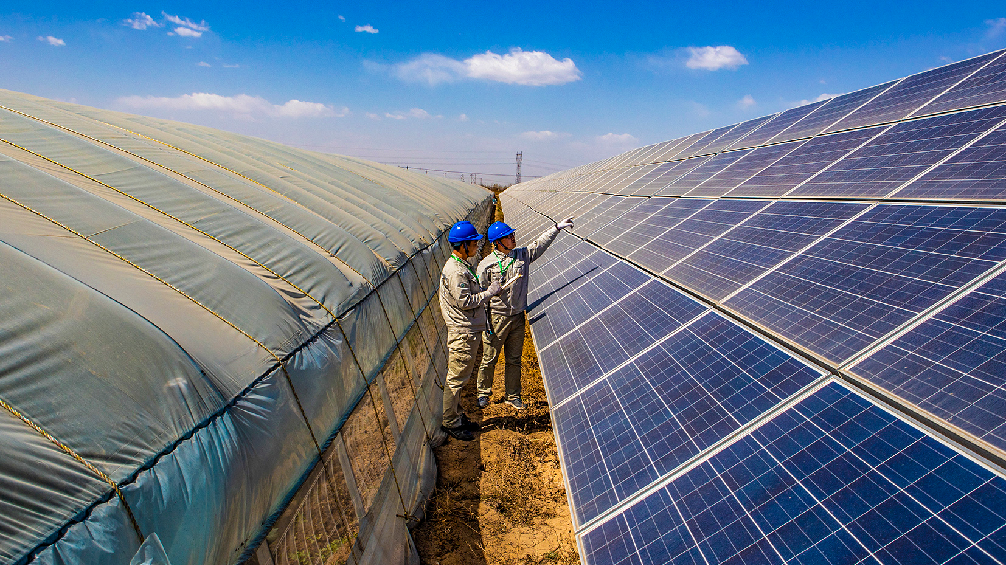Connecting research with innovation: Is China setting the Pace?

A Long March-6 carrier rocket, carrying two multimedia satellites, blasts off from Taiyuan Satellite Launch Center in north China's Shanxi Province, August 4, 2021. /CMG
Considered as inseparable bedfellows, research and innovation play an integral role in stimulating sustainable economic growth and development. This is because new knowledge produced from cutting-edge research serves as the bedrock for creating innovative products which boost productivity, creates jobs, bolsters inclusive growth, improves living standards and supports sustainable development in an economy.
To unlock the full potential of research and innovation for sustainable development, many countries around the globe are investing heavily in this area, an investment pattern that has been dominated by the United States for a long time. In recent years, however, China's investment in research and development (R&D) has altered the dominance of the United States.
Recent data suggests that China's expenditure for R&D in 2021 is higher than any other country in the world as the amount exceeds $621 billion. While the United States – which used to be the largest investor in R&D – is expected to invest $598.7 billion in 2021, other developed countries such as Japan, Germany, France, the United Kingdom and Canada have R&D expenditures of $182.36 billion, $127.25 billion, $67.03 billion, $51.61 billion, and $32.19 billion, respectively.
The current volume of investment China has allocated to facilitate R&D is a true reflection of the country's dedication to promote research and innovation for sustainable development. For many years, China has exhibited a strong commitment to advance research and innovation. It is therefore not surprising that in 2020 the country filed the highest number of patents for the second consecutive time.
According to the World Intellectual Property Organization (WIPO), a specialized agency of the United Nations that measures innovation around the globe, China filed for 68,720 patent applications in 2020, representing an increase of 16 percent over the previous year. The United States was the second highest with 59,230 patent applications, a 3 percent increase over 2019.
Furthermore, out of the world's top 20 educational institutions that filed for the most patents in 2020, China has the highest representation with nine universities, of which five were ranked in the top 10. The remaining spots in the top 20 were occupied by educational institutions in the United States, the Republic of Korea and Japan, which accounted for six, three and two representations, respectively.
Also, among the world's top 20 companies that filed the most patents in 2020, Chinese telecommunications giant Huawei Technologies topped the list for the fourth consecutive time as two China-based companies BOE Technology Group Co., Ltd. and Guang Dong Oppo Mobile Telecommunications Corp. Ltd. were ranked ahead of Sony Corporation, Panasonic Intellectual Property Management, Hewlett-Packard Development Company, L.P, Microsoft Technology Licensing LLC and Robert Bosch Corporation. Interestingly, major companies in the United States such as Google Inc., Intel Corporation and Apple Inc. did not appear in the top 20 list, but ranked 28th, 37th and 40th, respectively.

Checking the condition of photovoltaic (PV) solar panels at a PV station in Wuyi County, north China's Hebei Province, March 30, 2019. /Xinhua
Clearly, China is a force to reckon with when it comes to connecting research with innovation as the country has proven to be a global leader in this area. However, the big question is: does China's remarkable progress in connecting research with innovation support sustainable development? To answer this question appropriately, it is important to examine China's performance in achieving the United Nations Sustainable Development Goals (UN SDGs), a well-selected group of 17 integrated Global Goals adopted by the United Nations in 2015 to ensure that development balances economic, environmental and social sustainability.
To achieve the UN SDGs, China is relying on research and development which is paying off. It is important to note that China has eradicated poverty, one of the 17 UN SDGs. How was this feat achieved within a few decades? The truth is that this astounding progress could not have been accomplished without connecting research with innovation. New knowledge from research was instrumental in scaling up the production of innovative digital technology such as mobile phones and digital financial products which enhanced access to finance and contributed significantly to ending poverty in China. One of the most outstanding technological achievements is China's investment in Artificial Intelligence (AI) and other related technologies.
According to Stanford University's Artificial Intelligence report (2021), China is currently the global leader in AI research and development; the country has the highest number of journal articles and journal citations in this field, surpassing the United States and the European Union, which are the two other major AI powers. This development is supporting sustainable growth in China as the new knowledge in AI facilitating the creation of innovative financial services which includes but not limited to the digital credit-scoring system which has improved the efficiency of lending and reshaped the financial sector.
Through financial technology (fintech), which relies on AI and other related technologies, the underserved and un-banked population in China are able to access financial services. This has enabled poor households to make or receive payments, save part of their income and also insure against risk. While digital financial inclusion has been essential in lifting people from poverty, it also serves as an invaluable resource during an economic recession.
For small and medium-sized enterprises (SMEs), which are vital to sustainable development as they account for the largest share of businesses in the country, fintech is also strengthening access to finance in the SMEs sector, bridging the finance gap which is one of the major challenges that constrains growth in the SMEs sector. This panacea is increasing productivity, creating jobs, promoting inclusive growth and has contributed significantly in eradicating poverty in China.
Again, as the world's largest carbon emitter, China is making remarkable progress in increasing renewable energy sources in the country's energy mix in an effort to have CO2 emissions peak before 2030 and achieve carbon neutrality before 2060. Concurrently, advances in renewable energy sources in China are contributing significantly to technological development to achieve affordable and clean energy in all regions of the world. By connecting research with innovation to produce renewable energy, China is not only making notable contributions to research, but also increasing the global capacity of clean energy sources.
In my previous article I highlighted excerpts of a report from the Global Commission on the Geopolitics of Energy Transformation that revealed that by the end of 2016 China was one of the global leaders in research and development for renewable energy with over 150,000 renewable energy patents which accounted for 29 percent of the world's total. With the world's largest installed capacity of solar, hydroelectric power and wind, China is currently a major exporter of renewable energy, accounting for about two-thirds of the world's production of solar energy equipment.
From a humble beginning, China has risen to become a powerhouse in research and innovation, committing adequate resources to achieve this tremendous accomplishment. This feat is worthy of emulation and also requires the cooperation of other major research powers such as the United States and the European Union to collaborate in a problem-solving process to foster sustainable development via research and innovation.
About the author: Alexander Ayertey Odonkor is the founder and leading expert at the Ghana Centre for China Studies, Africa’s preeminent and most comprehensive platform exclusively dedicated to authoritative interpretation of China’s domestic and foreign policies.
Production credits: This commentary is produced by the Ghana Centre for China Studies, and published in a joint collaboration with the China Global Television Network (CGTN)
At the Ghana Centre for China Studies we eschew specific policy positions. All positions and opinions expressed in this publication are solely those of the author (s).